Rahul Sahay’s quantum mechanics research started at his undergraduate school, the University of California, Berkeley. For his final project, working with DOE Computational Science Graduate Fellowship alumnus Norman Yao, he worked on the interface between many-body physics —the interactions of lots of particles with one another — and the theories underpinning quantum computing. Sahay likes […]

Extreme 3D
Argonne’s Advanced Photon Source upgrades to large-sample 3-D imaging beyond the depth of field – with assistance from high-performance computing.
Simulating computing’s future
Among Ang Li’s many other projects at Pacific Northwest National Laboratory, he and his colleagues also have developed a quantum circuit simulator. Quantum machines are arguably the computers of the future. They use the properties of quantum physics to store and manipulate data, letting them perform much faster than conventional machines. Standard computers store data […]
Undersea link to LHC
The Energy Science Network, the high-speed fiber optic data pipeline that has connected all 17 U.S. national laboratories for almost 30 years, will cross the Atlantic Ocean this year. The network will link with the Large Hadron Collider (LHC) near Geneva and with other information-intensive European research projects. The network, managed by Lawrence Berkeley National […]
Making hydrogen
On the roads around the Bay Area in 2015, there’s a good chance Brandon Wood will spot one of the first commercially available hydrogen-powered passenger vehicles: Toyota’s 2015 FC (fuel cell) car. The Toyota’s fuel cells will electrochemically combine hydrogen with oxygen to generate electricity, producing water as the only chemical emission. However, drivers will […]
Sidebar: Joints modeling: A worldwide movement
Matthew Brake, a principal research scientist at Sandia National Laboratories, New Mexico, estimates that several thousand researchers worldwide are striving to improve how mechanical joints are modeled on computers. Many work in laboratories led by 80 active members of the American Society of Mechanical Engineers’ Research Committee on the Mechanics of Jointed Structures, which Brake […]
Big explosions, big pictures
For discovering significant supernova phenomena and simulation flaws, several pairs of eyes beat pages of numbers, Anthony Mezzacappa says. Data visualization has been a key tool as he and his fellow astrophysicists model the standing accretion shock instability (SASI) in core-collapse supernovae, says Mezzacappa, director of the Joint Institute for Computational Science at Oak Ridge […]
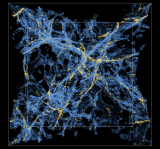
Rewinding the universe
Dark energy propels the universe to expand faster and faster. Researchers are using simulations to test different conceptions about how this happens.
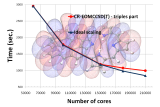
Balancing act
A Pacific Northwest National Laboratory researcher is developing approaches to spread the work evenly over scads of processors in a high-performance computer and to keep calculations clicking even as part of the machine has a hiccup.
Sizing up the scales
Exploring the breaking and rejoining of magnetic-field lines requires simulations and computation. A simulation’s accuracy, however, depends on various issues of scale. Magnetic reconnection’s multiscale nature exacerbates the challenge of simulating it. Early research was based entirely on fluid models in just two dimensions, since kinetic simulations were infeasible. Kinetic modeling requires the space and […]

Foiling airflow error
Portraying airflow over wings and other fluid movement is tricky. A Department of Energy award for early-career researchers is helping a former DOE CSGF fellow devise mathematical methods to decrease the error rate in fluid modeling.
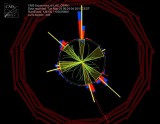
Cosmic questions
MIT’s Dragos Velicanu is helping sort through data from the Large Hadron Collider for clues to the mysteries surrounding the strong force and the early universe.
Seeking new angles
Dragos Velicanu likes to look at just about everything from a fresh perspective. “Outside work, I like to travel, go camping, hiking, skiing – basically see the world from all elevations, seasons and angles,” says the Department of Energy Computational Science Graduate Fellowship recipient at MIT. What’s more, he’s fortunate that his advisor is Gunther […]
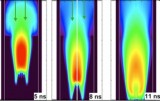
Sun on Earth
Simulations at Sandia National Laboratories reveal that using magnetism to heat and insulate fusion fuel could recreate solar conditions in the lab.
Putting Big Squeeze Fusion to the Test
A new Sandia National Laboratories-based approach to fusion that’s shown promise in computational simulations has passed its first bricks-and-mortar experimental test. MagLIF (Magnetized Liner Inertial Fusion) envisions using Sandia’s Z machine as a massive magnetic vise to implode, and thus heat, a tiny cylinder full of deuterium to Sun-like temperatures, igniting a fusion reaction. “I […]

Filling in the blanks
To prevent important information from being missed, a Berkeley Lab team is improving how supercomputers divvy up the ponderous tasks surrounding large simulations’ analytics and visualization.
Going deep
The discovery of that our universe is expanding at an accelerating rate garnered a 2011 Nobel Prize for Saul Perlmutter of the Supernova Cosmology Project at Lawrence Berkeley National Laboratory, but the finding also opened up a plethora of new questions about what is happening in the far reaches of deep space. There, researchers glimpse […]
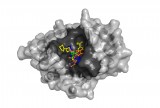
Overcoming resistance
To find a path around antibiotic resistance, a team working with the Intrepid supercomputer at Argonne National Laboratory is simulating molecular binding interactions to rapidly vet new infection-fighting candidates.
A timely death
Speed kills, as the slogan says, and in computers what it kills could be disease. Argonne National Laboratory researcher Andrew Binkowski’s calculations of protein structure help find ligands – smaller molecules – that attach to them, to deliver drugs that stop dangerous infections. But without supercomputers it could take months to model a single ligand, […]
A spontaneous collaboration
In 2007, when Oak Ridge National Laboratory (ORNL) researchers calculated that adding boron would bend carbon nanotubes, they did little with the information. Boron was one of several elements the computational scientists plugged into their model as they investigated ways to induce useful changes in nanotube structures. There were experiments to compare with the results […]
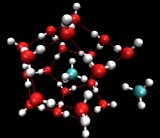
Twice-stuffed permafrost
A Pacific Northwest National Laboratory computation suggests that the water-gas compounds found in ocean permafrost can provide energy and store it, too – and then trap carbon dioxide.
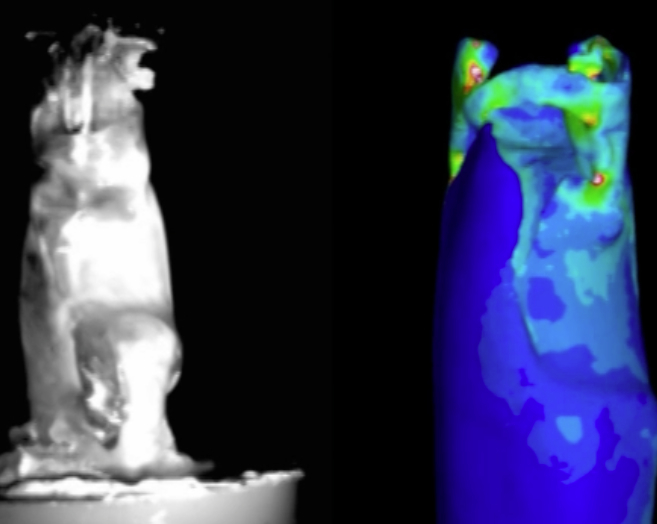
Prime-time punch
The mantis shrimp packs one of the strongest punches on Earth. Computational Science Graduate Fellow Michael Rosario is investigating the physics, design and material properties behind the crustacean’s prey-crunching wallop. His research has landed him on the National Geographic Wild channel.
Mining for aerosols and other particles
Klaus Mueller’s latest n-dimensional visualization work capitalizes on a decade-long collaboration with Department of Energy atmospheric chemist Alla Zelenyuk, work aimed at seeing the proverbial forest amidst trees of data. At DOE’s Pacific Northwest National Laboratory, Zelenyuk specializes in using single-particle mass spectrometry to analyze the real-time transformations of nanoparticles. This includes atmospheric particles, such […]
Boosting Berkeley Lab’s bacteria research
For one summer, Sarah Richardson postponed her work computerizing yeast genome research and probed bacteria instead. As part of her Department of Energy Computational Science Graduate Fellowship, Richardson served a 2009 practicum under Adam Arkin, director of Lawrence Berkeley National Laboratory’s Physical Biosciences Division. She made important contributions to Arkin’s research into an RNA-based transcription […]
Tracing CFCs and greenhouse gases
National Center for Atmospheric Research oceanographer Synte Peacock studies “the distribution of various tracers – something that tags a water mass and is carried around by ocean currents – to learn more about ocean circulation in the past and present.” These tracers include carbon and radiocarbon isotopes, paleotracers (fossils from the sea, in sediments and […]




